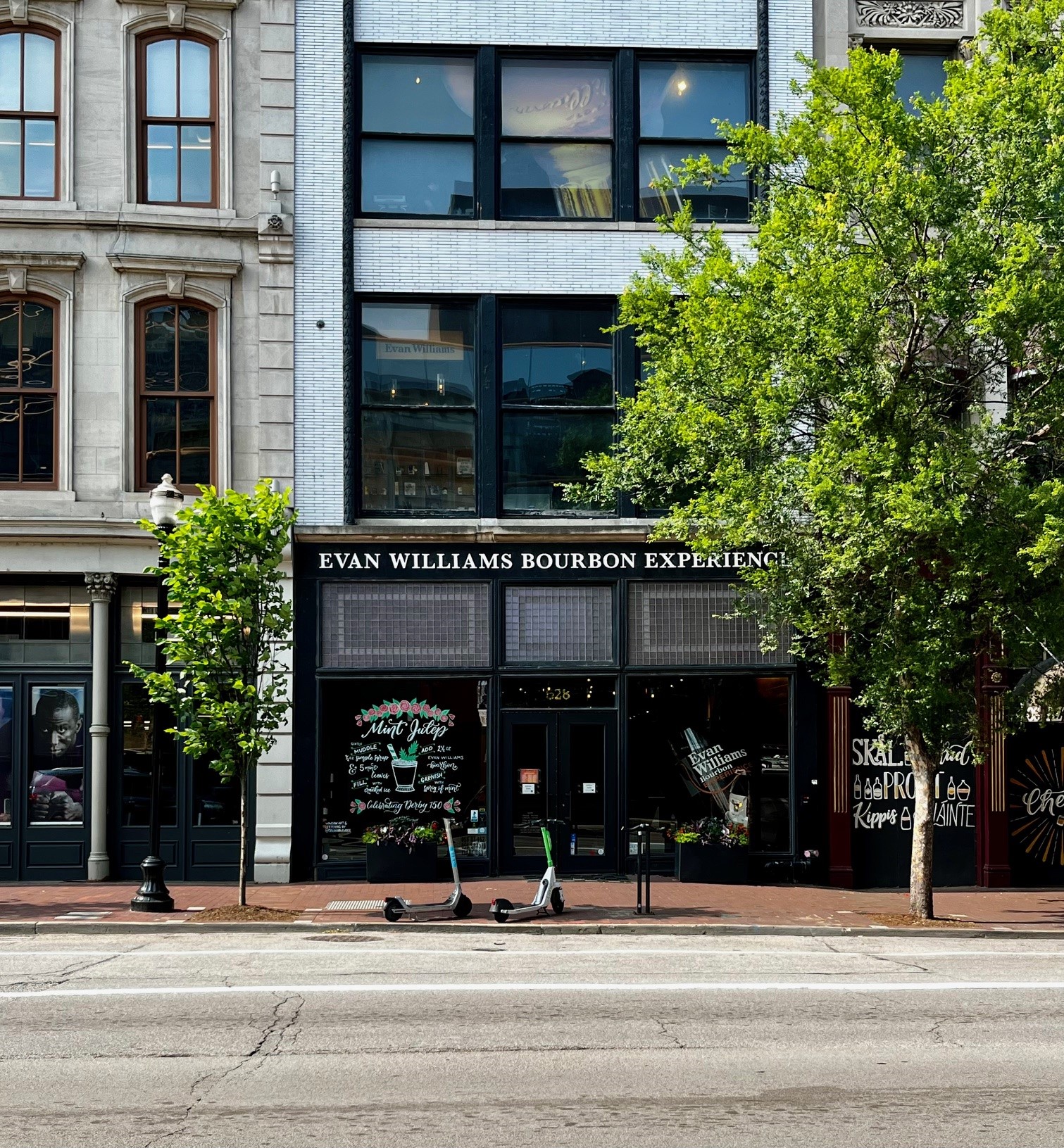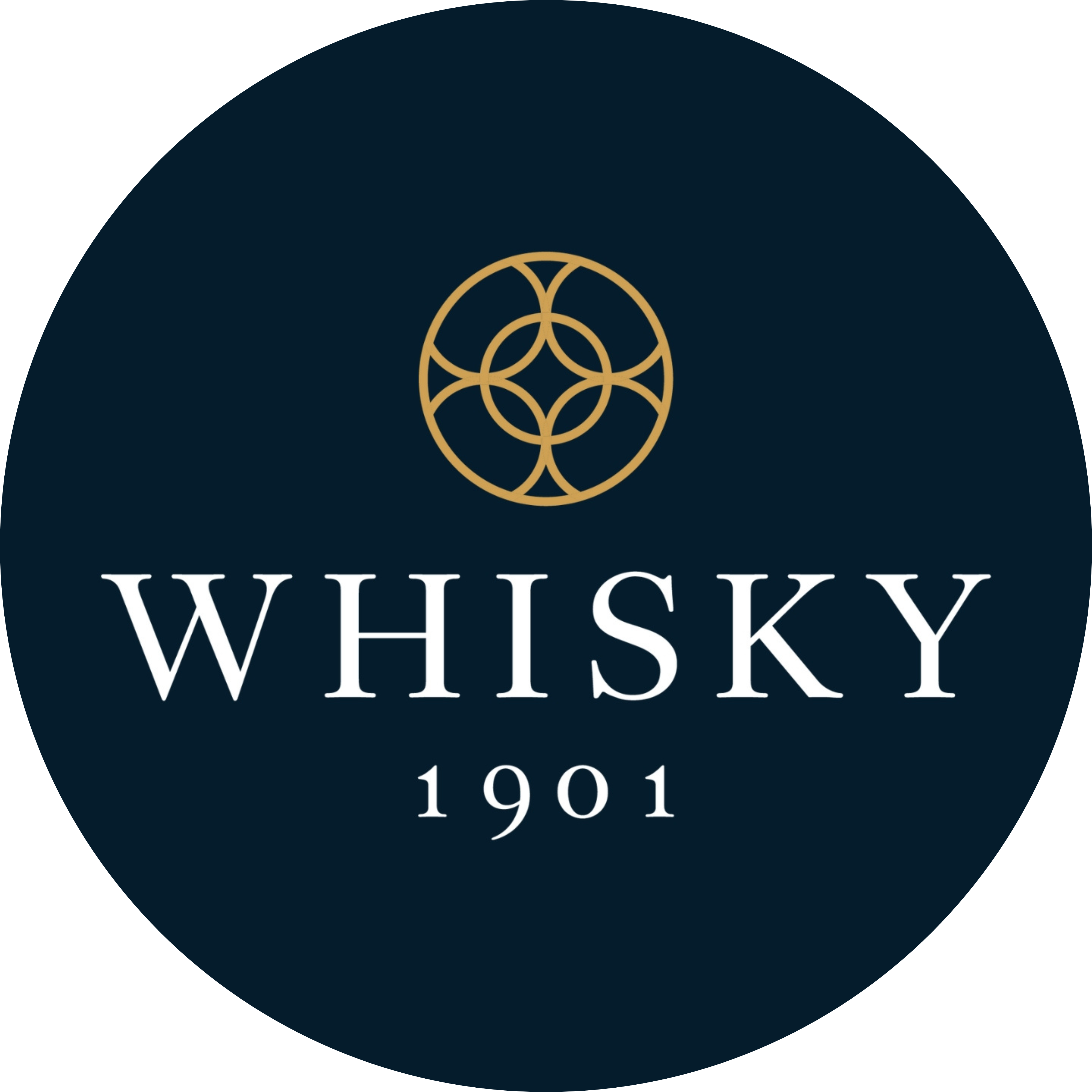Beyond Kentucky
For many, Kentucky is the centre of the American whiskey industry. Many of the country’s biggest brands are produced there. Think Wild Turkey, Jim Beam, Maker’s Mark and Buffalo Trace, to name a few. Most are in the north and east of the state. All are linked by the Kentucky Bourbon Trail which celebrates its 25th anniversary this year and attracts 2.5 million whiskey fans and tourists to the area annually.
But one area condenses everything that Kentucky has to offer into one place – Whiskey Row in Louisville. The city sits on the banks of the Ohio River and looks across to the neighbouring state of Indiana on the opposite shore. Louisville is rich in whiskey heritage and many regard it as the heartbeat of the bourbon industry.
A bit of history
Whiskey Row is in the downtown area of Louisville. This now includes both West Main Street and East Main Street and is spilling eastwards into the NuLu district. One set of buildings, which span just one block, lend the name to the area. These were constructed in the 1850s and named locally at the time as ‘whiskey row’.
The buildings were used by many companies, brokers and distilleries to store and mature whiskey. The proximity of the Ohio River made it easy to transport barrels to wherever they were needed once matured. During the mid- to late-1800s, Whiskey Row was a vibrant, bustling and busy area of Louisville.
However, it was not to last. Prohibition – the period between 1920 and 1933 when the US Government banned the production, sale and consumption of alcohol – had a devastating effect on the area, as it did across the entire American whiskey industry. Many companies went bankrupt, and the buildings laid empty and fell into disrepair over the following decades. The sad demise was complete when in the early 2000s the famous old buildings were condemned to demolition.
Whiskey Row today
-
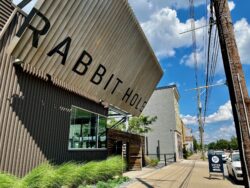
-
© Whisky For Everyone
-
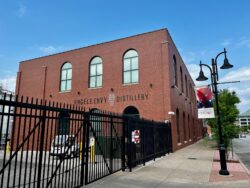
-
© Whisky For Everyone
-
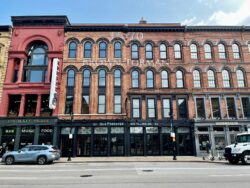
-
© Whisky For Everyone
-
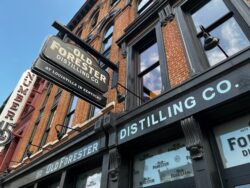
-
© Whisky For Everyone
But all was not lost. In 2011, a group of people decided to save the crumbling buildings and return them to their former glory. These include local councillors, architects and members of a preservation society. The rest is history.
The area is now a tourist hotspot and draws whiskey fans from all over the world to Louisville. It is again home to several brands and distilleries, with more moving in all the time. The original buildings have also recently been declared a National Historic Monument.
Big names and craft producers
Whiskey Row now refers to the entire West Main Street and East Main Street area, rather than just the historic buildings of the original Whiskey Row – these cover one block between 100 and 133 West Main Street.
Old Forester
One of the first to move in was Old Forester. Owned by Brown-Forman, its visitor centre and urban distillery occupy buildings that were formerly Brown-Forman offices on the original Whiskey Row between 1882 and 1919. The brand has done a great job, and you can feel the heritage oozing from the walls with the sympathetic renovation.
Evan Williams
The other large brand on Whiskey Row is Evan Williams. Its bourbon is huge in the USA where it is only outsold by Jim Beam. It is also Louisville-based and is said to be America’s oldest commercial bourbon distillery. It was founded in 1783 by Welsh immigrant Evan Williams on the banks of the Ohio River. The brands Whiskey Row incarnation boasts a visitor centre and artisanal distillery, which is used to produce small batch and experimental whiskeys.
Artisanal distillers
The remainder of brands that form the modern Whiskey Row are contemporary craft and artisanal distillers. The renovation and revitalisation of the district has allowed them to move in and thrive.
One such brand is Michter’s. This famous old American whiskey name fell on hard times in the 1980s and was resurrected around 20 years ago. Now it occupies a lovely old building on West Main Street (think, Ghostbusters HQ) which houses a fabulously stocked shop, cocktail bar and its Fort Nelson distillery – this produces award-winning sour mash bourbon and rye whiskeys.
Another is Bardstown. This distillery is out in the town of Bardstown to the south of Louisville, but the facility on West Main Street is one of the most recent additions to Whiskey Row. Not only is the brand new to Louisville, but also new to the distilling scene beginning production in 2016. The stunning renovation features an impressive whiskey boutique including exclusive bottlings, immersive and interactive tasting experiences, plus a whiskey and cocktail bar.
Eastern gems
To the east of the district are two gems – Angel’s Envy and Rabbit Hole. Angel’s Envy sits on East Main Street and is housed in an old building dating to the early 1900s. Many original features have been skilfully kept and the distillery started production in 2016. It hosts one of the best distillery tours on Whiskey Row, runs tastings and has a superb boutique-style retail space. It is a hugely impressive set up.
Rabbit Hole has a much more modest, and slightly hipster feel. Located a block or two back from East Main Street, it feels the most craft and artisan of the lot. Its outlook is also to offer something different and outside the norm within the American whiskey landscape. That said, everything is highly designed and has a lovely feel. Tours are on offer as are tasting flights of the range and a small shop. A sunny outdoor space decked with cool furniture is the perfect spot for a dram after exploring Whiskey Row.
Whiskey Row is a must visit if you are ever in that part of the world. You can feel the history and the different brands offer a multitude of unique experiences. You will also get to taste some exceptional whiskey. I wish I could have spent more time than I had, but it leaves me with the perfect excuse to revisit Louisville sometime in the future.
To start your own whisky journey closer to home or find out more about cask investment, get in touch with one of the experts at Whisky 1901.


